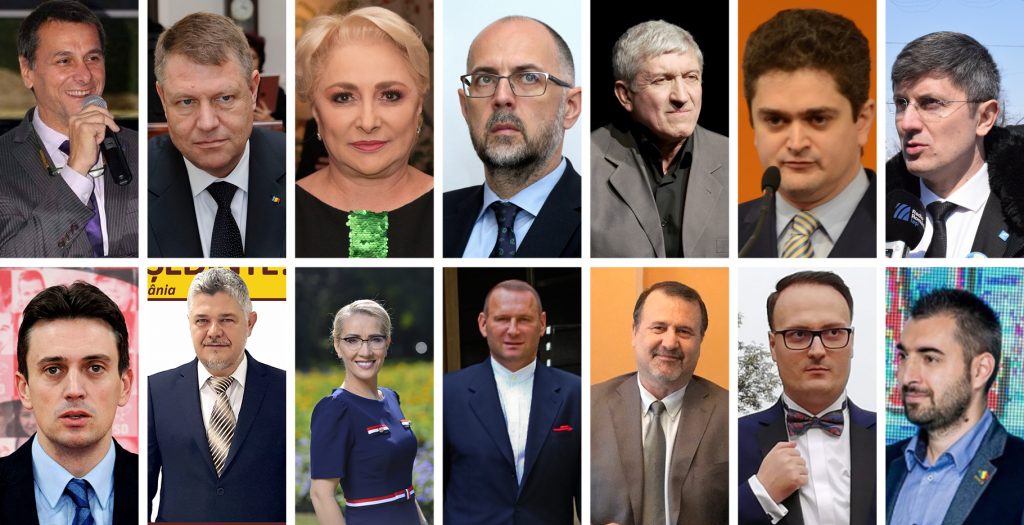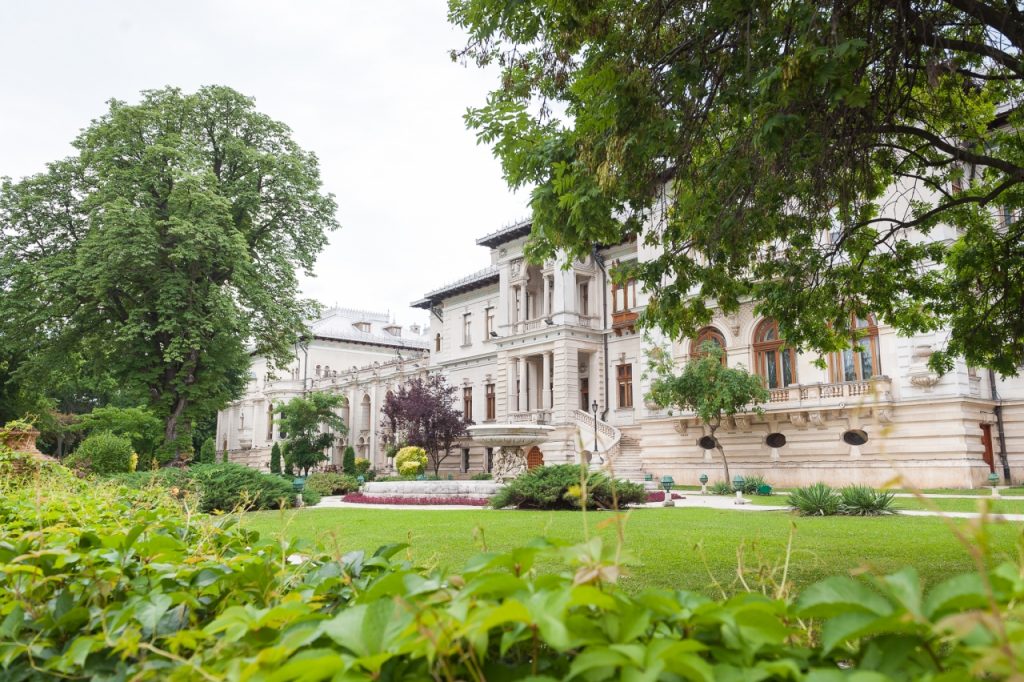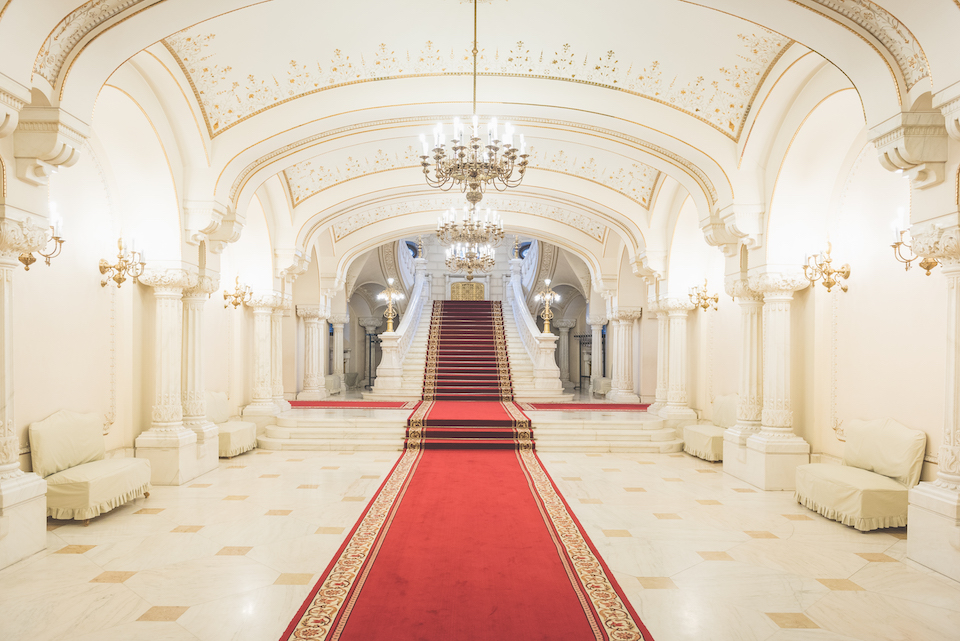Romania is preparing for a new round of presidential elections scheduled for November. As usual, a plethora of candidates have publicly announced their intentions – apparently, fourteen remains the magical number, matching the elections of 2014. But the fact is, few have a decent chance of success. In this article, we take into consideration only the candidates with the highest chances, complementing them with the Hungarian candidate, Hunor Kelemen. To make our selection we have used the latest available public opinion polls and also sat down with political scientist István Székely.*
The presidential elections will be held in Romania on November 10, 2019, with the second round scheduled fourteen days later on November 24. The president is elected in a two-round system for a five-year term. If one candidate obtains a majority of 50%+1 of all registered voters in the first round, he or she is declared the winner. If not, then a second round is held between the two contenders with the highest proportions of votes in the first round. The candidate who then obtains a majority is declared the winner and will serve as the president of the country. Current president, Klaus Iohannis, elected in 2014, is eligible for re-election, and he is considered the favorite, leading the polls published so far. Considering that the likelihood of winning the elections in the first round is low, the main question at this stage is who will be the most successful challenger to enter the second round, the decisive round of the presidential elections.

If we look at the latest surveys and take an average of the results, we find that three candidates have decent chances to challenge Iohannis in the second round, Székely tells TransylvaniaNOW. For example, the latest poll, conducted by IMAS, shows the following results: Iohannis leads with 45%, followed by Mircea Diaconu with 16.6%. In the third spot, we find Dan Barna with 14.2%, and closing the list is acting prime minister Viorica Dăncilă with 12.4%. Since the election campaign officially commenced on October 12, we have taken a dive into the campaign ideas that the candidates are sharing with voters in order to gain their support for the presidential seat. We have considered the messages that the candidates are building their campaigns on and their target audience. But before we get to that, we need to understand what’s at stake for Romania in this presidential election.

First of all, there is a discrepancy between the political legitimacy and the executive powers that the president of Romania holds, Székely explains. The president is elected by voters directly, which vest in him or her great political legitimacy, but that is not proportionate to the president’s executive powers. For the powers vested in the seat through direct election, the president would better fit a Parliament-elected president (see the Hungarian or German model) and not the semi-presidential system currently in place in Romania. However, this situation doesn’t cause a problem until cohabitation occurs, Székely continued. Cohabitation is a system of divided government that occurs in semi-presidential systems, when the president is from a different political party than the one controlling the majority of seats in both houses of Parliament. We don’t have to go back too far in time to find an example of this in Romania: For eight of the ten years of his presidential mandate, Traian Băsescu assumed the role of the “player-president” (“președinte jucător” in Romanian, “játékos elnök” in Hungarian), after he lost coalition support in 2006. He had been backed by a coalition between PC, PD, PNL, and RMDSZ, but when the Conservative Party (PC, previously the Humanist Party) withdrew its support from the cabinet, the coalition lost its majority in Parliament.
Among others, the president’s responsibilities include two key roles:
The emphasis on the Romanian Intelligence Service (Romanian: Serviciul Român de Informații, abbreviated SRI) is because, contrary to other European countries, the SRI plays an important role in influencing internal affairs. In 1996, a former SRI employee, Constantin Bucur, alerted the media to the Romanian Intelligence Service’s illegal phone tapping of politicians, journalists, and other public figures. Bucur was convicted of revealing top-secret information, but he won a trial against the Romanian state after appealing to the European Court of Human Rights.

Analyzing the message sent so far by candidates through existing channels, we get very different approaches to the president’s role. “One of them is the approach of current president Klaus Iohannis and candidate Hunor Kelemen, who share a vision about the future of Romania. The main difference between the two visions is that Iohannis’ vision speaks against the PSD, while Kelemen’s vision is based on post-material values. Dăncilă and Barna speak about a governmental program, which is rather interesting, because this is way beyond the president’s current powers. The president keeps political questions on the agenda, at maximum,” Székely says. “Compared to the above, Diaconu’s approach is rather interesting because he speaks about a president representing civilians, the citizens populating the country,” he adds.
Despite the discrepancy between the programs and visions, there is a consensus among the candidates when it comes to foreign affairs: None of them questions the direction that Romania currently takes; they see the country as part of the European Union, and they also agree with the goals set for geopolitical and armed forces policy. They also agree on the importance of a good relationship with the U.S., Székely emphasized.
For the second part of the analysis click here
* István Székely is a political scientist affiliated with the RMDSZ.